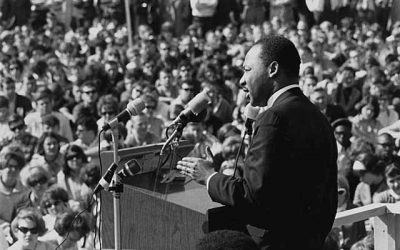Once, after giving a talk, I was confronted by a lady in the audience who asked what some people regard as the ultimate question:
“What is YOUR solution?”
“There are no solutions,” I said. “There are only trade-offs.”
“The people DEMAND solutions!” she shot back angrily.
The people can demand square circles if they want. But that doesn’t mean that they will get them. What they are more likely to get is the illusion of a solution by someone seeking their vote.
Nowhere have illusions been more abundant than in discussions of housing — especially that ever-elusive “affordable housing” that so many people wring their hands over — often while passing laws that make it virtually impossible to achieve.
It has become axiomatic in some quarters that only the government can provide affordable housing to low-income people. Often the people who talk this way do not let economics cramp their style or history distract their attention.
Within living memory, there was a time when there were no government housing programs. The federal government first got into providing public housing with the National Housing Act of 1937. (It is amazing how many bad ideas began in either the 1930s or the 1960s.)
How in the world did ordinary people, much less the poor, have affordable housing before then? A 1909 survey in
Today, 28 million Americans spend upwards of 30 percent of their income for housing. In parts of
How could there have been affordable housing back in the bad old days, before there was so much compassion, social justice and a Department of Housing and Urban Development? This was back when people built, sold and rented housing for the sake of — you should excuse the expression — profit.
Did those greedy builders and unscrupulous landlords we hear about actually provide housing that the poor could afford?
Since there are only limited numbers of rich people, anyone who is serious about making money usually has to offer something that most people can afford — even when that something is housing. Builders seldom build housing explicitly for the poor, but most of us don’t live in brand new housing anyway, whether we are rich or poor.
Much of the housing in
It is precisely the government which has made it virtually impossible to build affordable housing in places like coastal California and other places where there are severe land use restrictions, such as “open space” laws, as well as rent control and a crushing amount of red tape — which ought to be called green tape, because of the environmental extremists behind much of it.
Today, we have gotten used to the idea that the government will take care of the poor by putting them in housing projects. We have also gotten used to seeing videotape of public housing projects being demolished. What has not been demolished, however, are the unsubstantiated assumptions behind these disastrous social experiments.
Just mention “the projects” and people recoil at the thought of all the crime, violence, drugs, and single-parent families with multiple problems. How did this happen?
A slim new book by Howard Husock of the
Yes, that’s trillion. Political mistakes are not cheap.




